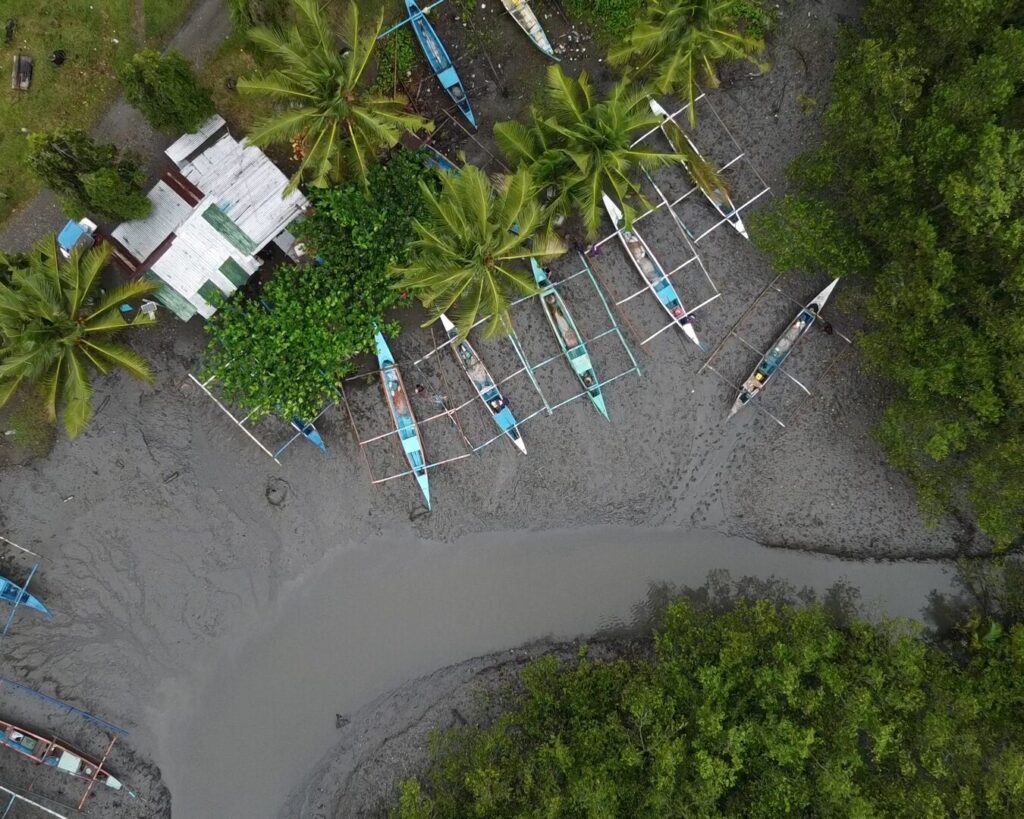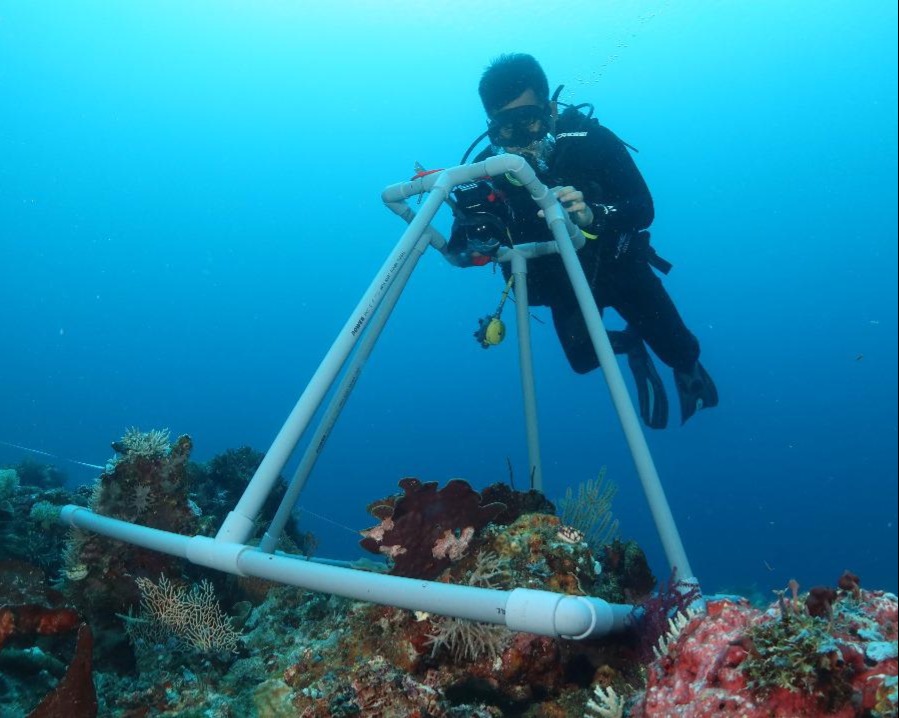Financement de l’adaptation fondée sur les écosystèmes : tendances, obstacles et opportunités

As climate change intensifies, the stability of ecosystems and the well-being of human communities are increasingly at risk. The urgency of implementing effective adaptation strategies has never been greater. Ecosystem-based Adaptation (EbA) has emerged as a strategic, people-centred approach, that leverages biodiversity and ecosystem services to enhance climate resilience while offering multiple co-benefits, including improved food and water security, biodiversity conservation, and sustainable livelihoods. Despite its proven potential, mobilising adequate and sustained financing remains one of the greatest obstacles to scaling EbA. Bridging this funding gap is essential for EbA to achieve its full potential as a driver of global adaptation efforts.
Global Trends in Adaptation Finance
A recent study conducted by the World Resources Institute found that investments in adaptation offer substantial economic value, with every US$1 invested in adaptation yielding returns of up to US$10.50 in a ten-year timeframe. Despite these findings, the United Nations Environment Programme’s (UNEP) Adaptation Gap Report 2025 (AGR 2025) confirms that adaptation finance continues to lag far behind needs. International public climate finance remains skewed toward mitigation, which accounts for about 57% of total international climate finance, compared to 28% allocated to adaptation and 15% to cross-cutting initiatives.
Building sustained momentum to finance adaptation has proven difficult. International public adaptation finance fell from US$28 billion in 2022 to US$26 billion in 2023, while developing countries’ adaptation needs are estimated to reach US$310-365 billion per year by 2035. Unless current trends are reversed, global adaptation finance will continue to fall short of both international targets and real-world needs.
Despite these challenges, the adaptation finance landscape is evolving and offers growing opportunities for innovation and collaboration. Concessional loans and grants remain the backbone of adaptation finance, comprising 70% of adaptation flows in 2022-2023. These instruments are critical for meeting growing needs and enabling vulnerable economies to access finance without exacerbating debt burdens. Multilateral development banks (MDBs) continue to play a leading role in delivering this support, providing 57% of international public adaptation finance. By leveraging concessional resources and blending them with other instruments, MDBs help de-risk and scale adaptation investments and attract additional partners.
Meanwhile, private sector contributions remain limited, at US$5 billion per year. With targeted policy action and risk-sharing mechanisms such as blended finance, the AGR 2025 suggests that private investment could rise tenfold to over US$50 billion annually by 2035, potentially meeting up to 20% of global adaptation needs. However, private sector contributions are expected to remain concentrated in upper-middle-income countries and commercially-attractive sectors, potentially widening disparities in access to adaptation finance.
Encouragingly, innovative financial mechanisms are emerging to expand investment in adaptation. Yet, even as opportunities to mobilise new sources of finance grow, access remains highly uneven, with persistent structural and social barriers preventing many vulnerable countries and communities from securing the resources they need.
Structural and Social Barriers to Accessing Adaptation Finance
Ensuring that adaptation finance is accessible and fairly distributed remains a central challenge within the global climate finance architecture. The Rapport sur l'écart d'adaptation 2024 (AGR 2024) further underscored a persistent structural imbalance in the adaptation finance landscape. It remains far easier to finance large-scale, capital-intensive projects that yield immediate, measurable results, especially those with clear revenue streams. By contrast, smaller, locally-led or transformational adaptation projects face greater challenges securing finance. Such initiatives typically involve longer timeframes before benefits are realised, and higher uncertainty, but with non-market outcomes such as improved equity and ecosystem health. [A working definition of transformational adaptation proposed by the UNFCCC secretariat: “adaptation that changes the fundamental attributes of a system in anticipation of climate change and its impacts.”]
These structural biases are compounded by persistent social and gender inequities. Only 17% of international public adaptation finance commitments directly target local communities, and gender considerations remain marginal. Furthermore, among 97 National Adaptation Plans (NAPs) and Nationally Determined Contributions (NDCs) analysed, only 20 included costed Gender Equality and Social Inclusion (GESI) interventions.
The prevailing focus on large, short-term investments, combined with insufficient support for marginalised populations, continues to limit progress towards systemic and inclusive change needed to achieve long-term climate resilience.

Catalysing Change and Expanding Access to Finance: The Role of the Global EbA Fund
The AGR 2024 emphasised the need to support “strategic and even transformational adaptation.” In this context, the Global EbA Fund stands out as an innovative and catalytic funding mechanism built to address the barriers of access and inclusivity. By offering smaller but strategic grants, the Fund fills a critical gap in the global finance architecture, supporting projects that may fall outside the scope of major funding mechanisms but that hold strong potential to catalyse systemic change.
The Global EbA Fund’s core mission is to create enabling environments to mainstream and scale EbA solutions. The funded projects work with nature to accelerate climate action and to address gender and social equity gaps, ensuring that initiatives reach those most vulnerable to climate impacts. In doing so, the Global EbA Fund not only expands access to adaptation finance but also demonstrates how targeted, inclusive investment can drive broader transformation across systems.
One of the Global EbA Fund’s strategic objectives is to support projects that expand access to sustainable short- and long-term financing mechanisms for EbA. By empowering grantees to develop sustainable financial models, the Fund not only mobilises new sources of capital but also aims to demonstrate practical and scalable pathways for embedding ecosystem-based approaches within broader adaptation and resilience frameworks. The Global EbA Fund’s growing portfolio of projects demonstrates how diverse financial approaches can advance adaptation through EbA:
- “Beyond Bang for the Buck” – Philippines
By quantifying the cost of implementing sustainable fisheries management systems and linking findings to local government unit budgeting, this project provided an economic case for municipalities to invest in EbA.
Through innovative partnerships, this project developed sustainable financing models for reef ecosystems, mobilising US$0.8 million from two impact investors. By supporting social enterprises in aquaculture, ecotourism, and blue carbon, it generated local livelihoods while securing long-term protection of marine ecosystems.
Grounded in Indigenous and local knowledge, this initiative developed financing strategies and blended finance tools that align public and private investment for EbA, supporting resilient food systems, ecosystem restoration, and inclusive livelihoods.
This project is developing an insurance mechanism that links mangrove ecosystem protection to climate-risk reduction and humanitarian assistance, using revenues from blue carbon credit to offset insurance premiums.
Together, these initiatives illustrate how different financial approaches can effectively overcome finance access barriers, promote equity, and scale EbA. By fostering partnerships among communities, governments, and financial institutions, and by testing innovative, locally-grounded tools, the Global EbA Fund is helping to unlock finance that strengthens climate resilience, protects biodiversity, and supports livelihoods. While there are notable gaps in accessing climate financing for EbA, leveraging innovative financial mechanisms and fostering inclusive partnerships can help mobilise new funding avenues. Project results from the Global EbA Fund show that even small-scale initiatives can generate robust evidence, laying the foundation for replication and scaling. Capturing and sharing lessons is essential to close the adaptation gap and attract new partnerships and financing streams, ensuring that EbA solutions are adequately supported, expanded, and sustained to build climate resilience and empower communities across the globe.
References
UNEP (2024). Adaptation Gap Report 2024. Come hell and high water. Nairobi: United Nations Environment Programme. https://www.unep.org/resources/adaptation-gap-report-2024
UNEP (2025). Adaptation Gap Report 2025: Running on empty. Nairobi: United Nations Environment Programme. https://www.unep.org/resources/adaptation-gap-report-2025
UNEP (2024). Adaptation Gap Report 2024. Come hell and high water. Nairobi: United Nations Environment Programme. https://www.unep.org/resources/adaptation-gap-report-2024
WRI (2025). Strengthening the investment case for climate adaptation: A triple dividend approach, https://files.wri.org/d8/s3fs-public/2025-06/strengthening-investment-case-climate-adaptation.pdf?VersionId=een52ahEiIO4IaOA6e8ps4fQCN4xTtph&_gl=1*1wqxqwk*_gcl_au*Nzg5MDE0MDc5LjE3NjA5ODQxNjU
Global EbA Fund (2025). Adaptation through Integrated Landscape Investment: Testing scalable tools and strategy in the San Martin Region of Peru. https://globalebafund.org/project/mobilizing-finance-for-ecosystem-based-adaptation-through-integrated-landscape-investment-testing-scalable-tools-and-strategy-in-the-san-martin-region-of-peru/
Global EbA Fund (2025). Asia Pacific Nature-Based Risk Reduction & Insurance Facility. https://globalebafund.org/project/asia-pacific-nature-based-risk-reduction-insurance-facility/
Global EbA Fund (2025). Beyond Bang for the Buck – The Business Case for Financial Inclusion to Scale EbA Solutions in Philippine Coastal Communities. https://globalebafund.org/project/beyond-bang-for-the-buck-the-business-case-for-financial-inclusion-to-scale-eba-solutions-in-philippine-coastal-communities/
Global EbA Fund (2025). Effective Management and Sustainable Financing of Coral Reef Marine Protected Areas in the Philippines. https://globalebafund.org/project/effective-management-and-sustainable-financing-of-coral-reef-marine-protected-areas-in-the-philippines/
Photos credit: Blue Alliance
